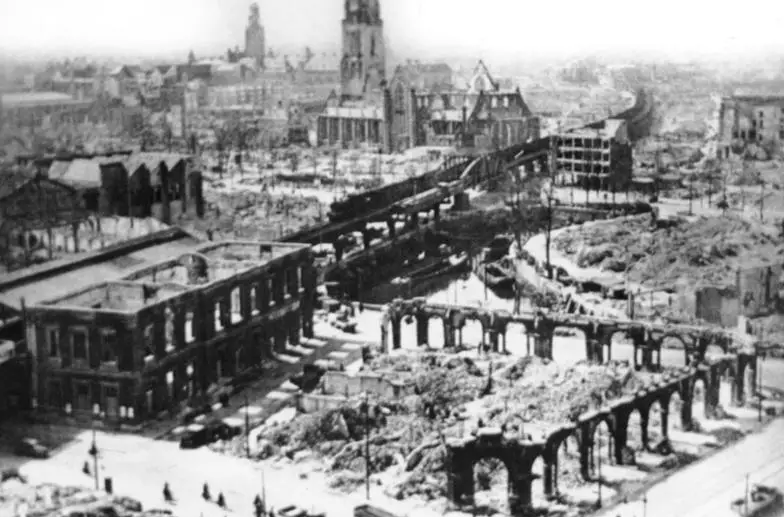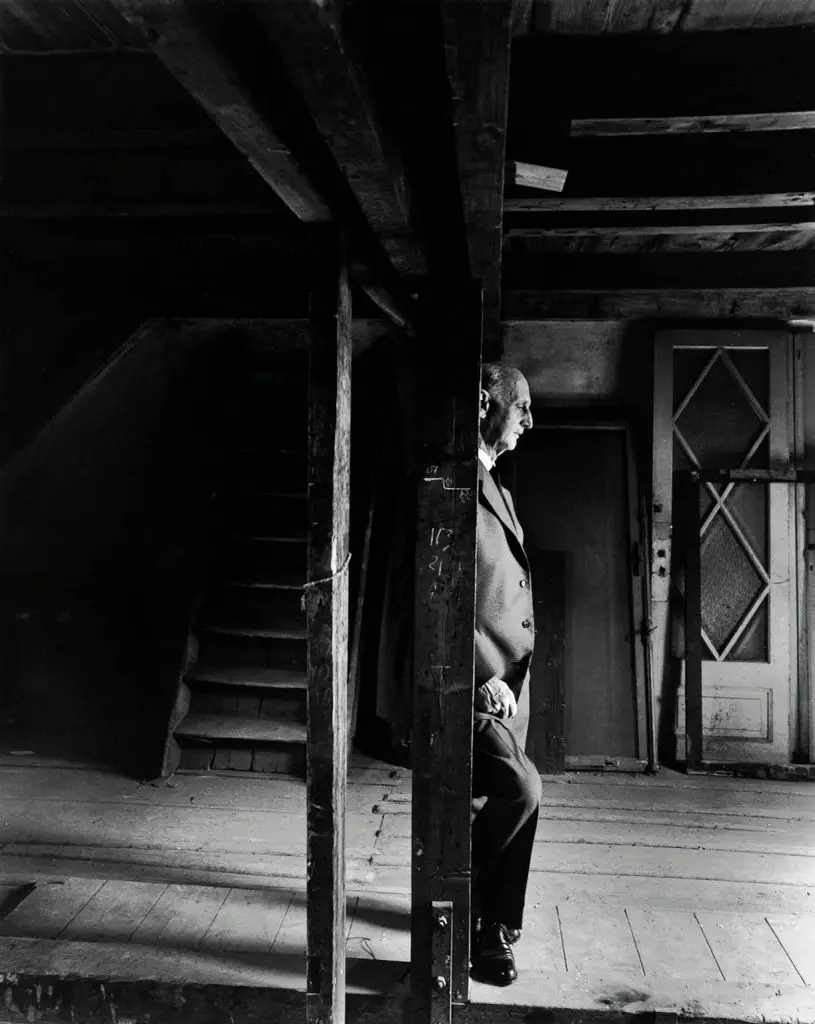Everybody knows Anne Frank and her diary, where she wrote her whole life of isolation during the two years she had to hide from the Nazis with her family in Amsterdam. It is widely known what happened during this time and the destiny of most Jewish during the Second World War, yet, how did actually Anne Frank die?
In 1944, after being discovered by the Gestapo in their hiding place in Prinsengracht 263, Anne Frank and her family were arrested. In February 1945, Anne Frank died of typhus at Bergen-Belsen, the concentration camp in Northern Germany where she was transferred.

Unlike most people think, it wasn’t immediately and it wasn’t because of the gas camps that she and her family die. Some of the members of her family, indeed, suffer this bitter end, however, Anne Frank and her sister Margot had a different path. If you want to know a little bit more about their history, this is the place.
Anne Frank’s History
Unlike many people think, Anne Frank (1929-1945) was born in Frankfurt, Germany, and not in the Netherlands. A few years after Anne was born, Adolf Hitler won the elections and became the chancellor of Germany, making his Nazi party the main and only party to follow, instructing the nation on measures to persecute German’s Jewish citizens.

Back in Germany, Otto Frank (1889-1980) was a businessman and in 1933, when the Nazi party declared its hate towards Jewish, he decided to move to Amsterdam with his whole family. Anne was the only one who stayed in Germany until a year later when she started studying in Amsterdam and became quickly a popular girl at her school.
Despite the Netherlands being neutral during this period of time, in May of 1940, the Netherlands was invaded by the German Nazis. It is then when many cities suffer from bombarding and attacks (including the destruction of the centre of Rotterdam).

During this time, life was already very dangerous for the Jewish community and this only increased the danger, growing and growing through the years: the more power the Nazis were claiming, the more dangerous it became.
In the case of the family Frank, it was because Margot Frank, Anne’s sister, got a letter asking her to report herself at a work camp in Germany in the summer of 1942 that the who family decided to disappear: the best way they found to do this was to hide in the attic of one of the apartments belonging to the father, Otto Frank: Prinsengracht 293, where he used to develop his business.

What they did was pretend as if they were fleeing to Switzerland and ask for help from friends and colleagues from work to remain in the attic for as long as the Nazis were in the Netherlands.
Along with them, the family Frank was joined by their business partner, the family Van Pels, also Jewish. And shortly after that, they were joined by a Jewish dentist.
Many of you may know already all this part of the story. It wasn’t a particular case, different from thousands of other Jewish families who suffered from the Nazi’s power during this time. What made them special was the diary kept by Anne Frank during the whole isolation they suffered for those two years.

Anne received a diary to keep up her dreams of becoming a famous writer or a journalist just a few days before they hide in the attic. It was thanks to this gift that she was able to keep a two years journal of all the things they had to do to survive, her thoughts and experience, her feelings and a more human and personal perspective to the history we all know.
What does she talk about in her diary?
I am sure that many of you like myself have read this famous book that has become a must in the list of universal literature one has to read before dying. Both in the book and in the museum house in Amsterdam, we can find a lot of information to get to know Anne and what they had to go through as a family and herself as an individual:

- There was a small apartment next to the offices where the Frank company was still operative: this means that they had to be quiet during the daytime and were allowed to be active only during the night time in order to be sure they were never heard or found by the people working right below them.
- There were 8 people inside the small apartment, a big number for any time of intimacy or personal space for being 2 years in that condition.
- She wrote everything in chronicle order, helping the reader understand perfectly well what was the natural reaction for the family and the Jewish community to the events happening in Europe at that time.
- She wrote about her identity, the importance of being who you are and of never denying yourself.
However, her death is, of course, not included in the diary. This was left behind in the apartment after the whole family was found and it was thanks to her dad, who went back looking for it to fulfil her daughter’s dream: being published and becoming a famous writer. Something that she posthumously did.
Death of Anne Frank
In the summer of 1944, after being discovered by the Gestapo in their hiding place in Prinsengracht 263, Anne Frank, her family and the rest of the Jewish in the apartment were arrested.

Anne Frank died of typhus in February 1945 in the Bergen-Belser camp in Northern Germany where she and her sister Margot were transferred instead of being sent to Auschwitz to the gas chambers immediately.
The death of the two girls was almost simultaneous and this was only a few weeks before the British would claim this concentration camp and the end of the Third Reich. This is also one of the reasons why she also made her story famous: it was the first time the world was told what the Holocaust really was and how Jewish people were surviving.
Amsterdam’s Nazi Occupation
At the beginning of the war, the Netherlands was self-defined as a neutral country but it didn’t last long. By 1942 the Nazis have already started the occupation in the whole territory, which would last until the 5th of May 1945. This day is remembered in the Netherlands as Bevrijdinsdag (Liberation Day).
By the time the Nazi Occupation started, the Dutch monarchy was already in exile and they installed their own political system and figures.
It is believed that thanks to the organization system of the Netherlands and the early use of ID and registration, including the religious believes, it was easier for the new occupants to find the residence of all the Jewish and identify them quicker than in other countries. This is also why they sent the letter of recruitment to Margot Frank, knowing beforehand her address, age and situation.
Anne Frank House in Amsterdam
Anne Frank House is one of the most visited museums in Amsterdam and the reason why many people visit the capital of the Lower Lands. Here are some tips and important information you need to know:

Photo collection: Anne Frank Stichting, Amsterdam / photographer: Allard Bovenberg || Photo Courtesy of Anne Frank Organization
- Anne Frank House is the actual Prinsengracht 263 where the Frank family was hidden and everything has been kept as they found it.
- The Museum was inaugurated in 1960 and it has seen been one of the most popular museums in Amsterdam.
- You can buy the tickets online and technically also there, but it is almost impossible to find tickets. If you are planning your visit to Amsterdam in advance, it is better to pre-book them online on their official website and plan it ahead if you don’t want to miss out.
- The diary and items belonging to the family and Anne Frank are exposed in the house, not to be taken photos of them but only to be enjoyed on the spot.
- Groups are allowed but only a maximum of 35 people can go inside the museum at the same time. One can only imagine the dimension of the space, considering that it is a small apartment with a couple of rooms. It is also the reason why daily visits are limited and due to the high demand, it is very hard to book a ticket and find a free date to visit the museum.
- In the house, there is a timeline with 34 parts of the book and the historical facts that were actually happening in the rest of the world during the Second World War.
- It is also explained all the information and researched done on the person who possibly betrayed the family Frank (more here)
If you happen to be in Amsterdam but you couldn’t get a ticket, there are other options that may work for you:
- Extra Queuing: After the last round gets inside the museum, around 9-10 pm, sometimes they allow a last round of visitors to enter the museum. It is always an exception and you have to ask the visitors centre or the house the same day you are planning on doing it.
- Ask your hotel: sometimes hotels buy their tickets in advance and you may be lucky!
Another thing you can do is to go for Life of Anne Frank and World War II Walking Tour